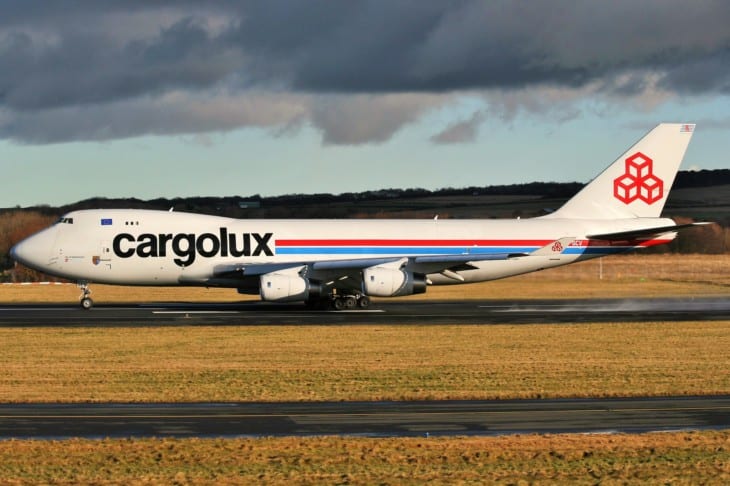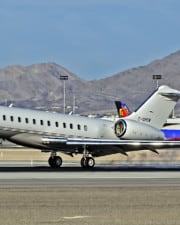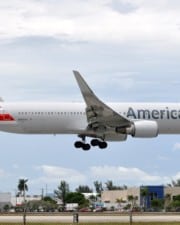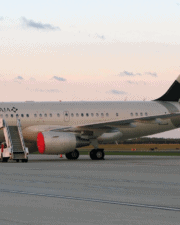Set out in the FAA’s Federal Aviation Regulation (FAR) handbook are a variety of laws and guidelines, which dictate how all civil aircraft can be used in US airspace. Among these regulations, otherwise known as “Parts”, exist the Part 121 and Part 125, which both regulate how commercially operated aircraft can be operated.
If you’re an avid avgeek wondering how Part 121 and Part 125 differ from each other, or what the benefits and drawbacks of each part are, then you’re in luck, as we’ll take a deep dive into each part to help you better understand the ins and outs of the FAA’s Part 121 and Part 125 licenses.
About Part 121
Part 121 applies to all scheduled air operators carrying cargo and/or passengers and is usually the license which most large air carriers and airlines in the United States operate under.

All carriers operating under Part 121 are required to have hazardous materials/dangerous goods protocols approved by the FAA, which detail various aspects of the carrier’s operations such as employee training and transportation procedures.
Since Part 121 involves the ferrying of large groups of passengers at a time for profit, very strict but necessary rules and regulations are to be followed by carriers intending to operate under a Part 121 license in the United States.
Why Was Part 121 Introduced?
Part 121 was created with the sole purpose of making commercial aviation with large airliners, cargo carriers and regional aircraft operators as safe and as regulated as possible to avoid any fatalities in United States airspace.
Formed and introduced by the FAA to standardize large-scale scheduled cargo, commercial and passenger air operators in the United States, Part 121 places the strictest possible regulations on aircraft operators in order to guarantee both flyers and the general public at large safe air travel.
What is The Purpose of Part 121?
The introduction of Part 121 was meant to set a higher competency benchmark for the crews and operators of large commercial air carriers such as Delta, United Airlines and FedEx to meet when transporting cargo or passengers both on a regional or national/international level.
Part 121 sets out very detailed specifications for airline operators to follow at all times, and stipulates that Part 121 license holders must hire a chief inspector, directors of safety, maintenance and operations, and a chief pilot in order to be allowed to operate.
Part 121 expects all involved in the running of a large airline company airplane used for money-making cargo and passenger flights internationally or regionally, to carry out their duties and hold them to the highest safety standards possible.
About Part 125
In order for an aircraft to be considered for Part 125 classification, the aircraft must match or exceed a maximum payload capacity of at least 6,000 lbs. or more, or a capacity to seat at least 20 people, as set out by the FAA’s regulations.

Part 125 is therefore applicable to big commercial passenger aircraft being used for personal use and even includes larger aircraft that previously had to operate under the regulations of the FAR’s Part 91.
Although Part 125 restricts license holders from conducting common carriage flights for compensation, Part 125 allows companies to receive payment for flights from private arrangements with clients as long as the company has a commercial pilot’s license.
Why Was Part 125 Introduced?
Similar to other sections of the FAR handbook, Part 125’s formation and introduction in 1981 by the FAA was to incorporate a standardized set of regulations and minimum requirements that must be followed and met by operators intending to fly at least 20 passengers at a time.
The formation of Part 125 created a new license category under which all Part 125-size aircraft were legally required to fly instead of the broader Part 91 category. This was all done with the single objective of raising international aviation standards starting with operators in the United States.
What is The Purpose of Part 125?
The biggest reason part 125 and its strict regulatory framework was formed by the FAA, was to ensure safer and standardized operational approaches, and to create rigid minimum safety standards which must be met by any carrier hoping to become part 125 certified.
This caused US skies to become very regulated and less likely to have serious accidents occur caused by the irregular usage of private jets or neglecting the basic service checks of the aircraft.
Part 125 also divided large private jets and their operators from commercial airlines that do operate flights on a profit-based margin.
How is Part 121 Different From Part 125?
While the FAR’s Part 121 and Part 125 both deal with carrying passengers and cargo, the contrasts between the two licenses are very stark. Part 121 and Part 125 both allow for carrying people, however, whereas Part 121 permits carriers to operate scheduled flights, Part 125 only makes provisions for carrying passengers without receiving compensation in return.
Part 121 is applicable to scheduled flight operators (operators with no fewer than 5 round trips every week between at least two different destinations) ferrying passengers in large commercial-sized jet engine aircraft.
All the big airlines operating in United States airspace are pretty much all Part 121 license holders, with very few privately-owned aircraft permitted to fly under Part 121 regulations in the US.
Part 125, in turn, relates to all privately-owned aircraft accommodating 20 passengers or more, or having a max payload capacity matching or exceeding 6,000 lbs., however, excludes turboprops and helicopters since they do not meet the minimum size threshold required by Part 125’s stringent rules and regulations.
How Are Part 121 And Part 125 Similar?
Part 121 and Part 125 certainly both share some commonalities with both Part 121 and Part 125 applicable only to large aircraft capable of carrying large amounts of passengers or cargo.
Both parts were introduced to make aviation, especially aviation involving the use of large jet-engine aircraft, as safe and as standardized as possible for passengers.
What’s Better About Part 121?
Even though Part 121 means that businesses who have a Part 121 airline operation are bound by the significant costs that come with ensuring their aircraft pass all the mandatory safety and maintenance checks, it puts their customers at ease and minimizes the risk of an accident occurring.
Crew members operating a Part 121 aircraft are also required to undergo formal training, which ensures that the airline’s passengers receive the best service available before, during, and after the flight.
While Part 121 holds few major benefits in store for operators other than the added income which can be achieved from flying scheduled regional and international flights, the passengers flying with Part 121 license holders enjoy the most benefits.
What’s Better About Part 125?
Individuals and corporate entities who own a Part 125 license can save on unnecessary safety and maintenance costs which come with owning and operating a larger plane since they are not required to abide by strict airline-like regulations set out in Part 121.
The introduction of Part 125 resulted in individuals and corporate entities operating and owning private civil aircraft capable of carrying the minimum Part 125 passenger and payload totals being legally permitted to use their private aircraft for carrying passengers for private or business reasons.
Part 125 aircraft and their operational crews are legally exempt from doing the same rigorous training required by Part 121 operating crews since Part 125 only applies to private aircraft.
Not being required to pay for costly training for their aircraft’s crew, part 125 operators save significant sums of money which would have been unavoidable if they had to follow part 121’s rules and standards.
Conclusion
Anyone owning a large civilian aircraft which matches or exceeds a max payload capacity of 6,000 lbs. or more, or a capacity to seat at least 20 people, will no doubt want to use their large plane to fly passengers or cargo from one destination to another.
Given the immense emphasis the FAA and other aviation bodies around the world place on aviation safety, simply owning an aircraft and using it to ferry passengers for a fee is highly retracted unless the aircraft operates under specified licenses.
Part 121 and Part 125 are both such licenses which govern the usage of large aircraft capable of carrying well above 20 passengers on long voyages, which all business and airline companies who have large aircraft in their fleet must hold.
For anyone attempting to start his/her own airline company to conduct scheduled flights in the United States, Part 121 is definitely the license for them, as it allows for the ferrying of large groups of people for profit purposes, albeit with demanding standards and protocols which must be met.
Alternatively, those running a multinational business with no interest in the aviation industry, but have a large fleet of aircraft for business purposes might find a Part 125 license to be much more suitable for their needs.
Related Posts













